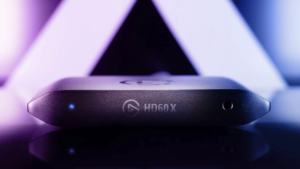Resident Evil 3 Remake most important graphics options – every video setting benchmarked

System Requirements
Optimum 1080p PC Build
Low vs Ultra Screenshots
GPU Performance Chart
CPU List That Meet System Requirements
GPU List That Meet System Requirements
Comments
Resident Evil 3 Remake
PC Demand
#100+
Rate this game
User Rating
8.8 user review score. Average score out of 10, based on 103 review scores” style=”background: #4db53c”>
8.8
Ok
Not Ok
Optimisation
9.2 optimisation score. Average rating, based on 74 user ratings” style=”background: #4db53c”>
9.2
The Resident Evil 3 Remake is finally upon us, and we’ve been running around Raccoon City, dodging zombos and getting beat up by everyone’s favorite walking concrete wall, Nemesis, all so that we could test each graphics setting and their performance impact in the game.
If you want to get the perfect balance of graphical fidelity and performance for your PC, then this graphics setting guide for the RE3 Remake will help you understand which options to turn down low to get a few extra frames per second, and which options you can turn up to Ultra to get RE3 looking beautiful for minimum performance impact.
If you’re looking for some benchmarking results, then pop over to our Resident Evil 3 Remake PC Performance Report page in order to see how well your system can run the Resident Evil 3 Remake. If you would like to see a more detailed breakdown of each graphics option and what they do exactly, you can check out our Resident Evil 3 Remake PC graphics settings page.
Resident Evil 3 Remake System Requirements
For the performance cost results below we used a GeForce PNY RTX 2060 graphics card, an Intel Core i7-3770K processor, and 8GB of DDR3 memory. The tests were performed in DirectX12 mode and I ran through the same short area through Raccoon City early in the game, and took average frame rates for each graphics option.
Resident Evil 3 Remake Graphics Options Performance Breakdown
The further right the bar goes, the more demanding the graphics option is. In the case of a bar going left of zero such as Shadow Cache in the Resident Evil 3 Remake performance chart below, this indicates that enabling this graphics option actually improves frame rates.

Just like in the Resident Evil 2 Remake, there’s a lot of post-processing effects you can change, which have very little impact on your performance. Options like Bloom, Lens Flare, Motion Blur, Depth of Field and Lens Distortion are all optional settings that have barely any impact on performance. Which means they all come down to personal preference rather than any tangible reason due to performance. Some of them may even degrade the image quality by making things a bit blurrier, so again, it’s all personal preference.
What are the most demanding graphics options in the Resident Evil 3 Remake?
As it turns out, there’s not a whole lot that is actually quite demanding, or at least not as bad as the Resident Evil 2 Remake. There’s the obvious contender here which is Image Quality, that’s essentially just texture resolution scaling. Turn this option up to 200% and you’re effectively doubling your resolution and almost halving your framerate. But nothing else really impacts the performance as much.
Going the other way is the Shadow Cache option, which will actually increase performance depending on how much VRAM you have to spare. Usually it won’t matter, but try turning Shadow Cache on and off and see how much it impacts your performance in Resident Evil 3.
Resident Evil 3 Remake Graphics Settings
Rendering Mode
In Resident Evil 3 both normal and interlaced are types of rendering modes. Interlaced will render intermittent lines and create a composite image, this reduces image quality but may increase performance.
Performance Impact – 0/5
Priority – 5/5
Rendering mode graphics option turned on compared to turned off
[Slide image over image or click to enlarge]
 |
 |
——————
Image Quality
This is essentially just resolution scaling. Scaling up to 200% effectively doubles the resolution but will almost halve your frame rate, whilst scaling down to 50% will do the opposite. We recommend keeping this option at 100% to render RE3 at your display’s resolution.
Image quality is the biggest impacting graphics option in Resident Evil 3 remake, but only because it renders lots of extra pixels if you turn it up to 200% max settings. But it is also a quick option to get extra FPS if you need some performance boosts and are willing to lower the RE3 image quality and therefore the number of pixels being shown.
Performance Impact – 5/5
Priority – 0/5
Image Quality graphics option turned on compared to turned off
[Slide image over image or click to enlarge]
 |
 |
——————
Anti-Aliasing
A graphics smoothing technique that will eliminate jagged lines around the edges of objects. This is a very desirable setting for increasing immersion, as lower settings will introduce a lot of jagged lines on your screen and honestly just don’t look nice in Resident Evil 3.
Performance Impact – 0/5
Priority – 3/5
 |
 |
——————
Texture Quality
This option affects the quality of textures in RE3, a higher setting will increase quality but will see a large performance impact as it will affect every texture in the game. We recommend going with the highest setting and then scaling down until you get a desirable performance.
Performance Impact – 1/5
Priority – 2/5
 |
 |
——————
Texture Filter Quality
Affects the detail and quality of textures when viewed at certain angles. A lower setting will blur textures but higher settings will retain sharpness and detail in Resident Evil 3 Remake.
It doesn’t look like much, but Texture Filter Quality in Resident Evil 3 Remake can make a big difference in graphical fidelity. There’s not a whole lot of difference between x16 and x8 texture filter quality, so you don’t have to go to the maximum setting if you’re experiencing performance issues.
Performance Impact – 0/5
Priority – 2/5
 |
 |
——————
Mesh Quality
Changes the quality of meshes of objects and characters with higher settings resulting in more detailed shapes.
Honestly this won’t impact performance much and neither is there much of a difference between Low and Ultra in Resident Evil 3 Remake. It may make objects and zombies look more realistic, but you really won’t notice it much considering you’ll be running past them most of the time.
Performance Impact – 0/5
Priority – 2/5
 |
 |
——————
Shadow Quality
Much like Texture Quality, Shadow Quality will affect the resolution of shadows in RE3 Remake. This is very desirable to have high as it really does enhance immersion drastically.
Performance Impact – 1/5
Priority – 4/5
 |
 |
——————
Shadow Cache
An option that caches the information of shadows in your GPU’s video memory.
If your card can handle it, we recommend turning this setting on in Resident Evil 3 as it can drastically increase performance. As reference, our baseline frame rate was 150.2fps with Shadow Cache disabled, this jumped to 175.4fps with Shadow Cache enabled. The difference may increase or decrease depending on how much VRAM your card has spare, but the results are well worth it.
Shadow Cache is the lowest performance impact option in Resident Evil 3 Remake and can even save you graphics card resource and get you extra frames per second if you turn this on.
Performance Impact – -4/5
Priority – 5/5
——————
Screen Space Reflections
Calculates more accurate reflections of a surrounding environment in reflective surfaces, like wet surfaces or other reflective materials.
An absolute must-have for immersion in RE3 as it more accurately reflects the environment in reflective surfaces.
Performance Impact – 0/5
Priority – 5/5
 |
 |
——————
Subsurface Scattering
Affects the quality of skin rendering in the Resident Evil 3 Remake. A great setting as it makes for more realistic looking skin on characters. However you will barely notice it, and if you have this setting turned off since the very beginning, you won’t miss it.
Performance Impact – 0/5
Priority – 1/5
 |
 |
——————
Volumetric Lighting Quality
This graphics setting when turned on creates a haze/fog effect around light sources. In a game like RE3 it does a wonderful job of enhancing your immersion. It will lower your performance slightly as it costs a few FPS to turn on especially in key lighting areas. There are quite a few haze/light sourced areas in resident evil 3, of course. Volumetric Lighting is a top graphics setting to have turned on to boost gameplay visuals and deliver the player enhanced immersion.
Performance Impact – 1/5
Priority – 4/5
 |
 |
——————
Particle Lighting Quality
Adds little specks of dust, dirt and embers into the environment around light sources. You won’t miss it if you never turn it on, but it does make some environments in Resident Evil 3 look nicer.
Performance Impact – 0/5
Priority – 1/5
 |
 |
——————
Ambient Occlusion
Ambient Occlusion provides a depth of shadow created by ambient light in resident evil 3 remake and it significantly helps make the gloomy environments look much more realistic in RE3. This is one of those options that you dont realise you will probably benefit as much from turning it on or not, but it certainly feels like something is missing if you turn it off. Great for immersion, affects performance a bit, but then if you are getting the Res Evil 3 remake you are basically paying to have graphics options like this layered into an already awesome game that was released before it could enjoy these visual enhancements. So turn this option on and enjoy the added depth.
Performance Impact – 2/5
Priority – 4/5
 |
 |
——————
Bloom
Causes bleeding from bright light sources. Whilst usually not essential, this effect will greatly enhance the quality of neon lights outside (as seen below). Though to be honest, in Resident Evil 3 you can easily do without it if you never turn this option from the start. Like the option above, this is one of those graphics settings that you should just turn on in Resident Evil 3 to help provide a level of immersion. There are a few scenes that benefit from having these options turned on and Bloom’s performance hit is pretty insignificant on your hardware.
Performance Impact – 0/5
Priority – 3/5
 |
 |
——————
Lens Flare
Another optional method for increasing immersion by simulating a cinematic camera effect. Turn it on for light artifacts on-screen when looking directly at bright light sources.
Performance Impact – 1/5
Priority – 1/5
 |
 |
——————
Motion Blur
Blurs the motion of characters and objects in Resident Evil 3 Remake. Again, this is a personal preference and is not essential to graphical fidelity.
Performance Impact – 0/5
Priority – 1/5
 |
 |
——————
Depth of Field
Adjusts the focus of the in-game camera when looking at objects close up in RE3. Enhances immersion for some, whilst distracting for others. We recommend turn this on and off and see how you feel about it.
Performance Impact – 1/5
Priority – 2/5
 |
 |
——————
Lens Distortion
Distorts the image as if it were a camera lens. Purely cinematic and by personal preference, though it is the only way of turning on Chromatic Aberration if you want that effect.
Performance Impact – 0/5
Priority – 1/5
 |
 |
——————
FidelityFX CAS + Upscaling
A new option added to Resident Evil 3 that increases render quality by sharpening images at a lower resolution, then upscaling the image back to the display resolution. It really doesn’t do much, and you might see little impact. But some lower-end PC’s will benefit more than higher-end ones.
Performance Impact – 1/5
Priority – 1/5
——————
And there we have all the Resident Evil 3 Remake graphics options tested for the frame rate performance hit to your graphics hardware, compared to the significance each video setting can have on your gameplay experience. On the whole, we have to remember that Resident Evil 3 Remake is all about layering in modern graphics settings onto an ageing game. This game, however, has incredible set pieces that stand the test of time, while already immersive, it really enjoys the graphical improvements and they some of the key video settings go a good way to bringing out even more zombie thrill factor.







